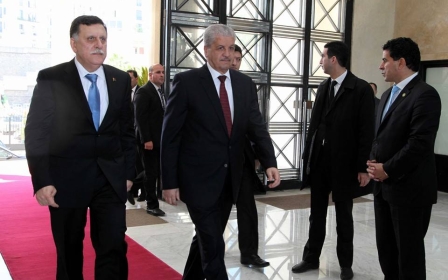Tunisia makes plans for refugees fleeing looming Libyan air strikes

Tunisia said on Friday that it was asking its regional authorities to work on a plan to cope with the fallout of a possible foreign military intervention in neighbouring Libya.
In 2011, hundreds of thousands of people fled from Libya to Tunisia to escape fighting that led to the fall of longtime dictator Muammar Gaddafi.
Tunisia shares a southeastern border with Libya, where Western powers are openly considering an intervention against the Islamic State (IS) group which has gained influence there amid political chaos since Gaddafi was overthrown.
"In preparation for the situation developing and its consequences, Prime Minister Habib Essid has authorised governors in the southeast regions to form regional committees," a government statement said.
These will include "the different parties concerned in order to draw up a plan for each governorate to successfully face... exceptional events that could occur," it said, without giving further details.
On Thursday, the health ministry said it had met to discuss "an emergency plan for the health sector... in preparation for the influx on Tunisian soil of refugees and migrants fleeing military air strikes that could occur in Libya."
Last week, President Beji Caid Essebsi issued a warning to countries considering an intervention in Libya.
"Don't just think of your own interests," he said. "Think of the interests of neighbouring countries, starting with Tunisia."
"Before any such act, please consult us, because it could serve you, but adversely affect us."
Tunisia last Saturday completed construction of a barrier along its border with Libya that was mainly built in response to attacks claimed by IS on its national museum and a beach resort that killed dozens of tourists.
The barrier stretches about 200 kms from Ras Jedir on the Mediterranean coast to Dhiba further southwest, across about half the length of the frontier between the two neighbours.
Middle East Eye propose une couverture et une analyse indépendantes et incomparables du Moyen-Orient, de l’Afrique du Nord et d’autres régions du monde. Pour en savoir plus sur la reprise de ce contenu et les frais qui s’appliquent, veuillez remplir ce formulaire [en anglais]. Pour en savoir plus sur MEE, cliquez ici [en anglais].




